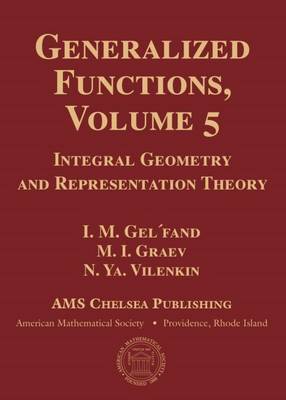The first systematic theory of generalized functions (also known as distributions) was created in the early 1950s, although some aspects were developed much earlier, most notably in the definition of the Green's function in mathematics and in the work of Paul Dirac on quantum electrodynamics in physics. The six-volume collection, Generalized Functions, written by I. M. Gelfand and co-authors and published in Russian between 1958 and 1966, gives an introduction to generalized functions and presents various applications to analysis, PDE, stochastic processes, and representation theory.
The unifying idea of Volume 5 in the series is the application of the theory of generalized functions developed in earlier volumes to problems of integral geometry, to representations of Lie groups, specifically of the Lorentz group, and to harmonic analysis on corresponding homogeneous spaces. The book is written with great clarity and requires little in the way of special previous knowledge of either group representation theory or integral geometry; it is also independent of the earlier volumes in the series. The exposition starts with the definition, properties, and main results related to the classical Radon transform, passing to integral geometry in complex space, representations of the group of complex unimodular matrices of second order, and harmonic analysis on this group and on most important homogeneous spaces related to this group. The volume ends with the study of representations of the group of real unimodular matrices of order two.
- ISBN13 9781470426637
- Publish Date 1 February 2016
- Publish Status Active
- Publish Country US
- Imprint American Mathematical Society
- Format Hardcover
- Pages 449
- Language English
